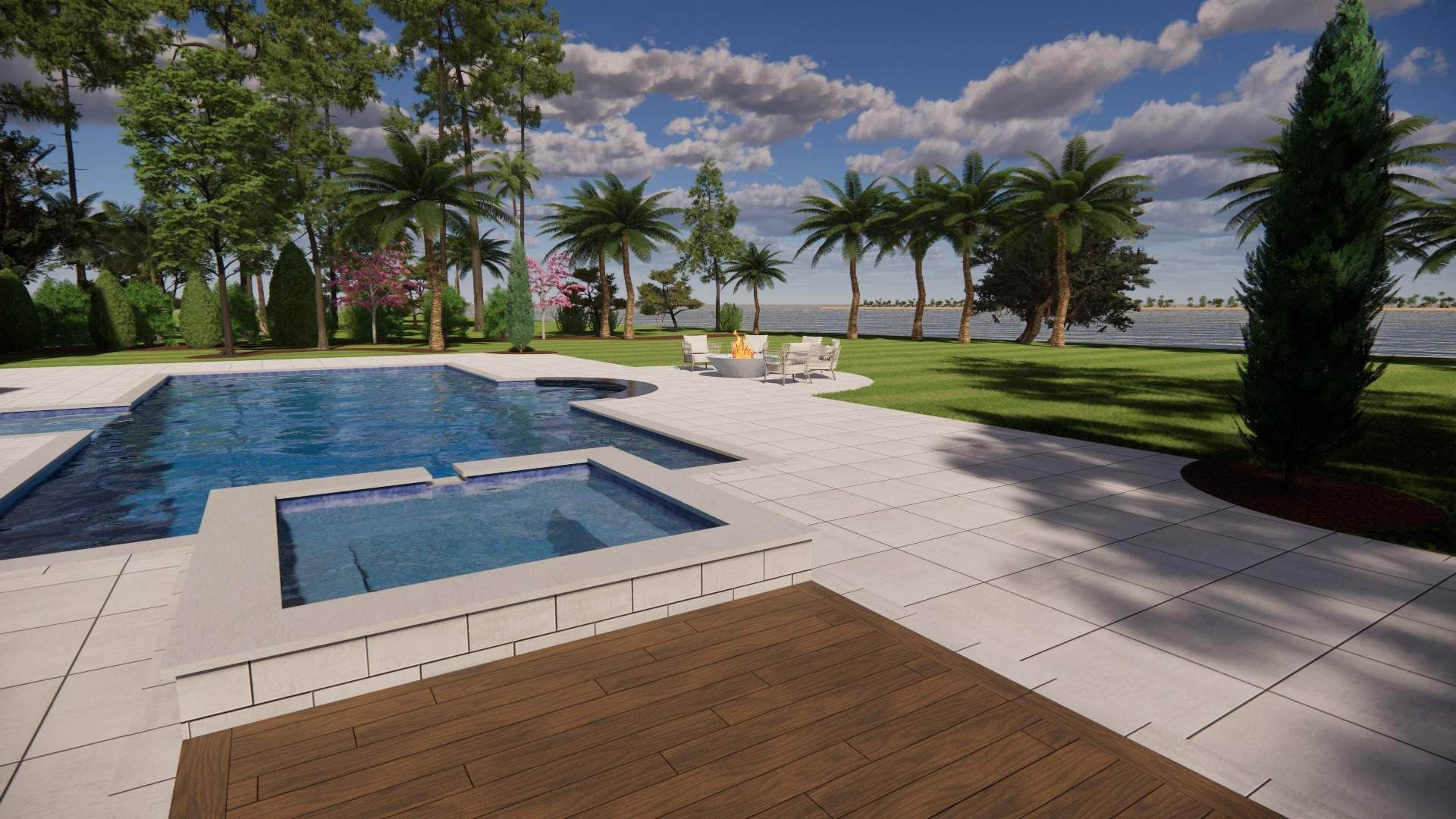Seasonal Plant Care Guide for Hilton Head: Nurturing Your Garden Year-Round

Seasonal plant care in Hilton Head requires attention to the unique climate and conditions of this beautiful coastal island. With its subtropical environment, Hilton Head offers a long growing season and the opportunity to cultivate a wide variety of plants. This guide will help you navigate the specific needs of your garden throughout the year, ensuring your plants thrive in every season.
Key Takeaways
- Hilton Head's subtropical climate allows for year-round gardening
- Spring is ideal for planting warm-season annuals and vegetables
- Summer care focuses on watering, pest control, and heat protection
- Fall is perfect for planting trees, shrubs, and cool-season flowers
- Winter tasks include pruning, soil preparation, and protecting sensitive plants
- Proper watering techniques are crucial due to sandy soil and salt exposure
- Native plants are well-adapted to local conditions and require less maintenance
- Regular fertilization and pest management are essential for healthy growth
Understanding Hilton Head's Unique Climate
Hilton Head's climate plays a significant role in seasonal plant care. The island experiences mild winters and hot, humid summers, which creates a long growing season. However, this also means plants face challenges such as salt exposure, sandy soil, and occasional extreme weather events.
Impact of Coastal Conditions on Plants
The coastal environment of Hilton Head affects plant growth in several ways. Salt spray can damage foliage, while sandy soil drains quickly, making water retention a challenge. Understanding these factors is crucial for successful gardening on the island.
Adapting Your Garden to Local Weather Patterns
To thrive in Hilton Head's climate, your garden needs to be adapted to local weather patterns. This means choosing plants that can withstand high humidity, occasional drought, and salt exposure. It also involves timing your planting and care activities to coincide with the island's seasonal changes.
Spring: Awakening Your Garden
Spring in Hilton Head is a time of renewal and growth. As temperatures warm up, it's the perfect opportunity to prepare your garden for the growing season ahead.
Preparing Soil for Spring Planting
Before you start planting, it's important to prepare your soil. Hilton Head's sandy soil benefits from the addition of organic matter to improve water retention and nutrient content. Work compost or well-rotted manure into your garden beds to enrich the soil.
Choosing and Planting Spring Flowers
Spring is the ideal time to plant warm-season annuals and perennials. Popular choices for Hilton Head gardens include:
- Petunias
- Marigolds
- Zinnias
- Gaillardia
- Coreopsis
These flowers thrive in the warm spring weather and provide vibrant color to your landscape.
Starting Your Vegetable Garden
For those interested in growing their own produce, spring is the time to start your vegetable garden. Tomatoes, peppers, squash, and beans are all excellent choices for Hilton Head's climate. Start seeds indoors in late winter or early spring for transplanting once the soil warms up.
Summer: Maintaining Lush Growth
Summer in Hilton Head brings heat and humidity, presenting both opportunities and challenges for gardeners.
Watering Strategies for Hot Weather
Proper watering is crucial during the hot summer months. Water deeply and less frequently to encourage deep root growth. Early morning is the best time to water, as it reduces evaporation and allows plants to dry before nightfall, preventing fungal diseases.
Protecting Plants from Heat Stress
To protect your plants from heat stress, consider using mulch to keep soil temperatures cooler and retain moisture. Provide shade for sensitive plants during the hottest part of the day using shade cloth or strategically placed larger plants.
Summer Pruning and Deadheading
Regular pruning and deadheading keep your garden looking tidy and encourage continuous blooming. Remove spent flowers and trim back overgrown plants to maintain shape and promote healthy growth.
Fall: Preparing for Cooler Months

Fall in Hilton Head is mild, making it an excellent time for planting and garden preparation.
Planting Trees and Shrubs
Fall is the perfect season for planting trees and shrubs. The cooler temperatures and increased rainfall help new plants establish strong root systems before winter. Consider native species like live oaks, magnolias, and wax myrtles, which are well-adapted to local conditions.
Fall Flower Planting Guide
Cool-season annuals can be planted in fall for winter and early spring color. Some excellent choices for Hilton Head include:
- Pansies
- Violas
- Snapdragons
- Dianthus
- Calendula
These flowers can withstand cooler temperatures and provide color throughout the milder Hilton Head winter.
Preparing Your Garden for Winter
As fall progresses, it's time to prepare your garden for winter. Clean up fallen leaves and debris to prevent disease. Apply a layer of mulch to protect plant roots from temperature fluctuations.
Winter: Protecting and Planning
While Hilton Head's winters are mild, some plants still need protection from occasional cold snaps.
Winter Protection for Sensitive Plants
For tender plants, be prepared to cover them with frost cloth or bring potted plants indoors when temperatures drop. Pay special attention to tropical plants that may not be cold-hardy.
Winter Pruning Techniques
Winter is an excellent time for pruning many trees and shrubs. Remove dead or diseased branches and shape plants while they're dormant. This is particularly important for fruit trees and roses.
Planning Your Spring Garden
Use the quieter winter months to plan your spring garden. Order seeds, design new garden beds, and consider any landscape changes you want to make in the coming year.
Year-Round Plant Care Essentials
Some aspects of plant care in Hilton Head require attention throughout the year.
Fertilization Schedule for Hilton Head Plants
Due to the sandy soil, regular fertilization is important for healthy plant growth. Use a balanced, slow-release fertilizer in spring and fall for most plants. For heavy feeders like vegetables and flowering annuals, supplement with additional fertilizer during the growing season.
Pest and Disease Management
Hilton Head's warm, humid climate can be conducive to pests and diseases. Monitor your plants regularly for signs of infestation or illness. Use integrated pest management techniques, focusing on prevention and natural control methods before resorting to chemical treatments.
Soil Health and Improvement
Maintaining soil health is an ongoing process. Regularly add organic matter to improve soil structure and fertility. Consider getting your soil tested every few years to ensure proper pH and nutrient levels.
Native Plants for Easy Maintenance
Incorporating native plants into your Hilton Head garden can reduce maintenance and support local ecosystems.
Benefits of Choosing Native Species
Native plants are adapted to local conditions, requiring less water, fertilizer, and pest control. They also provide food and habitat for local wildlife, contributing to a healthy ecosystem.
Top Native Plants for Hilton Head Gardens
Some excellent native plants for Hilton Head gardens include:
- Yaupon holly
- Sweetgrass
- Blanket flower
- Muhly grass
- Sea oats
These plants thrive in the local climate and add beauty and interest to your landscape.
Sustainable Gardening Practices

Adopting sustainable gardening practices not only benefits the environment but can also make your garden more resilient and easier to maintain.
Water Conservation Techniques
Given Hilton Head's sandy soil and potential for drought, water conservation is important. Consider installing a rainwater collection system or using drip irrigation to water your plants efficiently.
Composting and Natural Fertilizers
Start a compost bin to recycle yard and kitchen waste into nutrient-rich soil amendment. This reduces the need for chemical fertilizers and improves soil health naturally.
Creating Wildlife-Friendly Spaces
Design your garden to attract beneficial wildlife like birds, bees, and butterflies. Include a variety of native plants, provide water sources, and avoid using pesticides that can harm beneficial insects.
Seasonal Plant Care Calendar
To help you keep track of important gardening tasks throughout the year, here's a seasonal plant care calendar for Hilton Head:
Common Challenges in Hilton Head Gardening
Gardening in Hilton Head comes with its own set of challenges. Here are some common issues and how to address them:
- Salt damage: Choose salt-tolerant plants and rinse foliage after salt spray exposure
- Sandy soil: Amend soil with organic matter and use mulch to retain moisture
- High humidity: Ensure proper air circulation and avoid overhead watering
- Pest pressure: Use integrated pest management and choose resistant plant varieties
- Hurricane preparation: Have a plan to protect or move container plants and secure garden structures
By understanding these challenges and implementing appropriate strategies, you can create a thriving garden that withstands Hilton Head's unique conditions.
Conclusion
Seasonal plant care in Hilton Head requires attention to the island's specific climate and conditions. By following this guide and adapting your gardening practices to the local environment, you can create a beautiful, thriving landscape that enhances your home and supports local ecosystems. Remember to choose plants wisely, pay attention to soil health, and adjust your care routines with the changing seasons. With proper care and planning, your Hilton Head garden can be a source of joy and beauty year-round.

HOURS OF OPERATION:
- Mon - Fri
- -
- Sat - Sun
- Closed
All Rights Reserved | Hilton Head Landscapes | Website Created by: Kickstart Local


